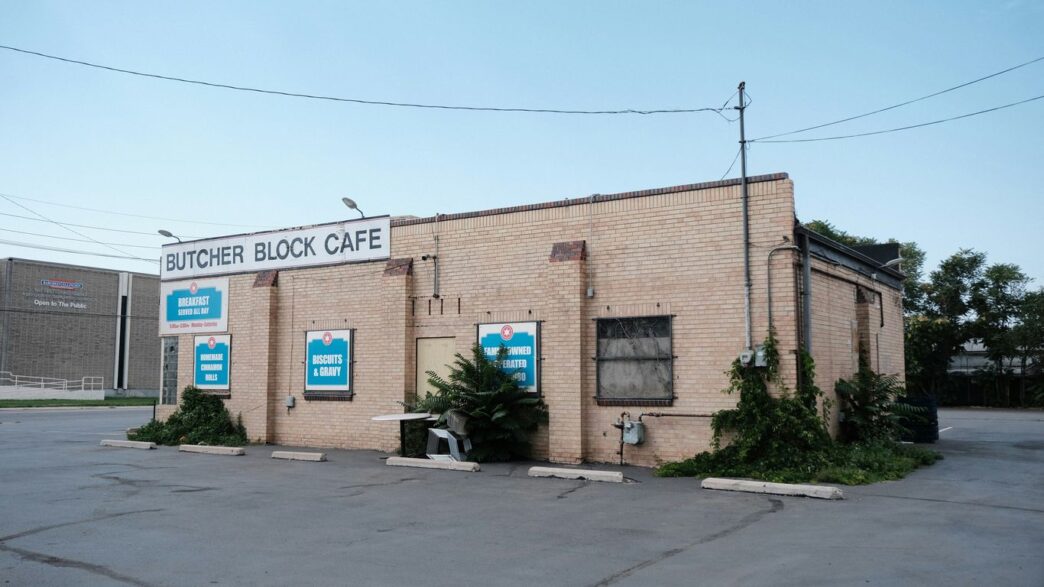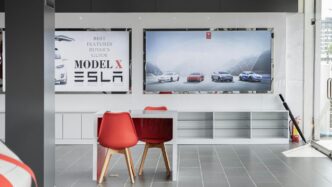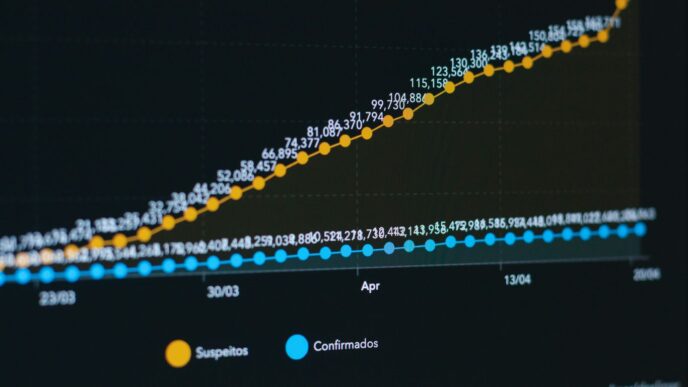Rivian Bloomington IL: The Heart of Electric Vehicle Manufacturing
Everyone in Bloomington-Normal seems to know someone who works at Rivian. This company has basically become the new face of the community. Since opening its massive plant in Normal, IL, Rivian has turned the city into one of the key hubs of electric vehicle (EV) manufacturing in the Midwest. Let’s get into what’s really happening behind those factory doors and why so many are talking about it.
Overview of Rivian’s Normal Plant Operations
Rivian’s Normal factory used to be an old Mitsubishi plant. Now, it’s pumping out some of the most-wanted electric vehicles in the U.S. They’ve refitted and expanded the place—there’s pretty much constant construction. Folks on the line work round the clock: three shifts, nonstop. The line is a mashup of robotics, skilled hands, and a lot of noise.
Key day-to-day highlights at the plant:
- Around-the-clock production (three shifts)
- Mixture of robotic automation and manual labor
- State-of-the-art battery assembly and testing
Here’s a quick breakdown:
| Area | Main Activities | Notes |
|---|---|---|
| Chassis Assembly | Frame and suspension build | Human/machine teamwork |
| Battery Production | Battery pack assembly/testing | Rivian-developed tech |
| Paint Shop | Eco-friendly paint application | Water-saving technologies |
| Final Assembly | Vehicle integration and QA | Extensive road testing on site |
Flagship Models Rolling Off the Lines
Right now, the buzz is mostly about three vehicles:
- R1T pickup (the rugged one you see around town)
- R1S SUV (for families and road trips)
- Commercial delivery vans (big order from Amazon)
They’re also getting ready for the R2, a more affordable crossover, which is a big deal for the plant’s future.
A couple things make these models stand out:
- Fully electric—not just hybrids or experimental
- Made to last in Midwest winters (with all-wheel-drive)
- Produced for both everyday drivers and huge delivery fleets
Expanding Production Capacity and Capabilities
Rivian isn’t just staying put—the facility keeps growing. Just last year, they announced expansions worth at least $30 million, adding 500,000 square feet for production and warehousing. Each expansion means more jobs, but also more automation and newer tech coming in.
This is what recent growth has looked like:
- Added warehouse space for more finished vehicles
- Upgrades to battery line to improve speed and quality
- More robotics and software behind the scenes
- Gearing up for R2 production (shift planned for early 2026)
In short, Rivian’s Normal plant isn’t just building cars. It’s changing what Bloomington-Normal is known for. Locals might still call it a factory town, but the future rolling off these assembly lines is all-electric.
Shaping the Workforce: Rivian’s Local Impact on Jobs and Skills
Rivian isn’t just building electric trucks and SUVs in Normal, Illinois. The company is also changing the job market in the whole Bloomington-Normal area, creating plenty of new opportunities for workers and students.
Employment Growth in Bloomington-Normal
It’s hard to miss the impact Rivian has had on local employment. The factory, which sits just outside Bloomington, has hired thousands since it opened. People who used to work in other factories or retail jobs are now finding new roles assembling electric vehicles, handling logistics, or running maintenance crews.
Here’s a quick breakdown of local EV job growth:
| Year | Estimated Rivian Employees | Related Jobs in Local Area |
|---|---|---|
| 2020 | 1,500 | 700 |
| 2023 | 7,000 | 2,800 |
| 2025* | 8,500+ | 3,200+ |
*projected
Local suppliers, coffee shops, and construction crews say they’ve felt this boost, too. It’s not just about positions on the factory line – accountants, IT specialists, and even janitorial workers are finding steady EV-related jobs.
Electric Vehicle Training and Education Partnerships
Building electric trucks takes a special mix of skills — and not everyone walks in the door knowing battery safety or high-voltage repair. Because of that, Rivian has teamed up with Heartland Community College and a handful of other schools. This means there’s new coursework for future technicians, and existing workers can pick up certificates without starting from scratch.
Some key partnerships and programs:
- Heartland’s EV Technology program for high school graduates
- On-the-job apprenticeships, providing paid training on assembly and maintenance
- Night and weekend classes for workers aiming to shift into more technical roles
The goal is straightforward: make sure the Bloomington-Normal region isn’t just chasing after jobs, but actually preparing residents for them.
Upskilling and Workforce Development Initiatives
Rivian’s approach so far hasn’t just been about hiring more workers — it’s also about teaching current staff new trades. There’s a strong push on the shop floor to:
- Offer upskilling workshops, such as robotics programming and quality control.
- Bring in outside instructors for battery diagnostics or electric drivetrain repairs.
- Cover tuition for select employees taking courses in automation or advanced manufacturing.
This is making it easier for folks who may have spent years doing traditional auto work to step into the fast-moving world of electric vehicles. More than a paycheck, workers here are gaining experience with technology that’s going to matter across the auto industry for years to come.
So, with Rivian calling Bloomington-Normal home, the city is quickly earning a reputation as a place to launch an EV career — and stick around to grow one.
Pushing for Profitability: Cost-Cutting and Manufacturing Innovation

Rivian’s been making some big moves in its Normal, Illinois factory, especially when it comes to bringing down costs and speeding up production. Profit hasn’t arrived yet, but these changes are helping the company get closer.
Streamlining Production for Competitive Advantage
When you look at what Rivian’s done over the past year or so, it’s honestly kind of wild. They’ve removed a bunch of steps from how they put together batteries, scrapped loads of extra equipment in the body shop, and even cut out hundreds of parts from their SUV and pickup designs. Here’s what that looks like in practice:
- More than 100 steps dropped from battery assembly
- 52 machines taken out of the body shop
- Over 500 parts removed from vehicle builds
This kind of trimming isn’t just paperwork. It means workers move faster, rely on fewer tools, and assemble each car more simply. With fewer parts, there’s less that can go wrong. The knock-on effect? Rivian’s able to boost output while also saving a ton of money.
Major Reductions in Material and Labor Costs
Rivian’s cost-cutting isn’t just for show—it’s saving real dollars. For their commercial van built for Amazon, tweaking designs and streamlining the process has slashed material costs by about 35%. This kind of savings is showing up in other models, too. Here’s a quick look:
| Vehicle Type | Material Cost Savings (%) |
|---|---|
| Commercial Vans | 35% |
| R1 SUVs & Pickups | Similar magnitude* |
*"Similar magnitude" as stated by the CEO; detailed figures aren’t public yet.
On top of that, fewer parts and steps mean less time with each car on the line—which cuts down on labor expenses. Every minute shaved off gets Rivian that much closer to making a profit per vehicle.
Introducing Next-Generation Assembly Techniques
Rivian’s not done tinkering, though. The company’s introduced a bunch of new ideas on the line:
- Redesigned battery packs—modules are now in one piece, instead of patched together separately.
- Smarter wiring—each car is built with 1.6 miles less wiring, saving both weight and time.
- New architecture—everything from software to drive units is built in-house for tighter control and more savings.
All these updates have bumped the factory’s assembly rate up by about 30%. That’s big; it means more vehicles out the door, using fewer resources each time.
Looking at the bigger picture, Rivian hopes these manufacturing changes don’t just keep investors around—they’re essential to making sure the company sticks around long-term. The push for profitability runs through every bolt, cable, and battery on the assembly line in Bloomington-Normal.
Supporting Illinois’ Innovation Ecosystem
Rivian’s presence in Bloomington-Normal isn’t just about building electric trucks and SUVs. The company is starting to shape how innovation happens across Illinois, setting off a chain reaction that goes way beyond its own factory gates.
Collaboration with Heartland Community College
The work Rivian is doing with Heartland Community College might not sound flashy, but it’s a big deal for tech training in the state. Rivian and Heartland teamed up to launch an Electric Vehicle Energy Storage program after the state invested $7.5 million. Now, students learn about EV mechanics, advanced manufacturing, and battery systems, making sure the local talent keeps up with the new tech rolling into town. The programs include:
- Hands-on training with real Rivian vehicles
- A mix of classroom courses and lab work
- Partnerships that connect grads with Rivian job openings
This approach is catching the attention of other schools. As BMW unveils its Vision Vehicle concept, you can really see how innovation in the auto industry has gone mainstream at all levels—from local schools to global brands.
Leveraging Local Research and Talent
Bloomington-Normal draws from a deep pool of tech-savvy grads and experienced workers. There’s Illinois State University right down the road, and if you look south, you hit the University of Illinois Urbana-Champaign, where over 120 companies camp out at their Research Park. Rivian taps into these resources by:
- Hiring university interns and recent grads
- Working with faculty on new materials research
- Supporting student design competitions and STEM fairs
Here’s a quick snapshot:
| University | Number of Tech Internships at Research Park |
|---|---|
| University of Illinois | 800+ |
| Illinois State University | 150+ |
| Heartland Community College | 50+ |
Attracting Automotive and Clean Energy Investments
With Rivian on the map, Bloomington-Normal is a magnet for new businesses wanting in on the electric vehicle and clean energy boom. The ripple effects can be seen in:
- More auto parts suppliers moving to the area
- Startups in battery technology setting up shop nearby
- Real estate investment as firms build new offices and warehouses
New investments aren’t just about big names—it’s service shops, coffee spots, parts suppliers, and logistics companies making the move, too. Over time, Rivian’s presence means Bloomington-Normal could become as well-known for tech and innovation as it is for production lines.
Everything Rivian is doing ties local workers, schools, and businesses closer to the tech trends reshaping the world. The next few years should show just how far that influence can spread.
Economic Ripple Effects: Rivian’s Role in Bloomington IL’s Future
For folks in Bloomington-Normal, the arrival and growth of Rivian isn’t some far-away headline — it’s changing daily life and business right here. Since setting up shop, Rivian’s impact has rippled out into local shops, suppliers, housing, and community infrastructure in pretty noticeable ways. Here’s a closer look at how this electric vehicle maker is helping reshape the city’s future.
Boosting Local Supply Chains and Small Businesses
With Rivian’s Normal plant firing on all cylinders, local parts manufacturers, contractors, and service providers are seeing new demand like never before. Small businesses that once served mostly agriculture or traditional auto work are pivoting, adding jobs, and investing in better equipment to keep up. Here’s what’s happening:
- Machine shops and specialty suppliers now source parts to Rivian’s lines
- Restaurants and caterers get extra business from plant workers and hosted events
- Tech and logistics firms, some spun out of the University of Illinois’ Research Park, are finding fresh opportunities in EV supply and services
Enhancing Infrastructure and Community Resources
All this growth brings its own set of needs. Roads around the Rivian facility have been repaved and widened, city transit has expanded, and even utilities have received a facelift. Some upgrades you might have noticed or heard about:
- Better bus routes serving the plant and surrounding neighborhoods
- Utility improvements (think high-capacity electric lines) to meet factory load
- More city investment in workforce training centers and STEM programs at local schools
- Expanded collaboration between Rivian and Heartland Community College, helping prepare residents for good jobs in manufacturing
Real Estate and Housing Market Developments
A big influx of well-paid manufacturing and tech workers does not go unnoticed by landlords and property developers. The housing market isn’t just a seller’s game lately; renters have more options, too. Here’s a snapshot of recent housing impacts:
| Year | Average Home Price ($) | Number of New Rentals | Major Developments |
|---|---|---|---|
| 2021 | 195,000 | 80 | Uptown Lofts |
| 2023 | 212,000 | 130 | Riverview Junction |
| 2025 | 236,000 (proj.) | 200+ (proj.) | New City West |
- New apartment complexes cater to both longtime locals and Rivian transplants
- Home values steadily rise, making current owners pretty happy
- Mixed-use projects near transit and shopping are popping up more frequently
It’s not just about more cars or fancier houses, either. Like self-driving and shared vehicles are set to shake up travel nationwide, Rivian is nudging Bloomington-Normal toward a future with more tech-centric jobs, new business concepts, and a stronger local economy — all in ways that folks here can see and feel, every day.
Navigating Policy and Market Challenges
The road for electric vehicle makers like Rivian isn’t exactly smooth—regulations keep changing, government incentives shift with each administration, and the market can be unpredictable. Rivian’s leadership has been upfront about needing to keep pace with federal rules and the fickle reality of EV demand. That means the company’s future in Bloomington-Normal is tied not just to how many trucks roll off the line, but how well it adapts to policies and market shifts.
Federal Incentives and Regulatory Hurdles
Government incentives play a big part in whether people feel comfortable taking the plunge into EVs. Tax credits can make the difference for many buyers, but those perks depend on where the cars are made, what batteries they use, and even what models are included.
- Federal incentives for EVs have changed multiple times over the past few years, sometimes creating confusion for buyers.
- Rivian has had to adjust its pricing strategy and supply chain planning more than once, just to fit shifting eligibility requirements.
- On top of that, compliance with new emissions and safety standards means constant upgrades on the factory floor.
| Year | Federal EV Tax Credit (max) | Battery Regulations (Y/N) | Major Policy Change |
|---|---|---|---|
| 2023 | $7,500 | Yes (sourcing rules) | IRA signed |
| 2024 | $7,500 | Tighter (more sourcing) | Model rules change |
| 2025 | Unknown | Pending new reg | TBD |
Responding to Shifts in Demand for Electric Vehicles
When gas prices swing or headlines talk about battery recalls, buyers pay attention—and so do companies like Rivian. They have to keep guessing what will actually sell, sometimes changing plans more than they’d like.
- Demand for large electric trucks and SUVs has gone up and down, putting pressure on Rivian’s sales goals.
- Reports on battery fires or charging problems tend to slow down sales, at least short term.
- There’s also been more competition from established automakers jumping into the EV game, crowding the market.
Investor Confidence and Company Growth Strategy
Anyone following Rivian’s stock price has seen the dips and jumps. Investors want to see clear plans and progress—especially when it comes to turning a profit. That makes company strategy a constant balancing act:
- Bringing production costs down without sacrificing quality.
- Communicating clear long-term goals, even as the market changes.
- Keeping enough cash in the bank to weather slowdowns or policy surprises.
At the end of the day, nobody expects the EV market to level out anytime soon, but Rivian’s place in Bloomington-Normal will depend on how flexible it can be—because flexibility means survival when the rules keep changing.
Looking Ahead: Expansion Plans and Global Ambitions

Rivian has made big promises in Bloomington-Normal, but the view ahead is just as grand. The company isn’t satisfied with merely producing its flagship electric trucks and vans—Rivian is already putting the pieces in place for much greater things. There’s a sense that this is only the beginning, both for Rivian and the region.
Preparing for the Launch of the R2 Model
You can feel the buzz on the factory floor. Workers and managers talk a lot about the upcoming R2, Rivian’s next-generation electric vehicle. Set to be more affordable and targeted at a broader segment, the R2 brings a few firsts:
- Expected to include new battery tech for longer range.
- Will feature a simplified assembly, cutting both cost and time.
- Scheduled for its debut in the next two years—with a pilot ramp-up in Bloomington-Normal before shifting to the Georgia plant.
Local workers are already training for these new manufacturing processes, and suppliers in Illinois are scaling up to deliver the components Rivian needs.
Factory Expansions to Meet Future Demand
Meeting the demand for electric vehicles takes more than minor adjustments—it needs hefty growth. Rivian is doubling down on updating its Bloomington-Normal facility to pump out more vehicles, faster. This expansion means:
- Increasing the annual capacity beyond 150,000 vehicles.
- Building additional lines dedicated to the R2.
- Hiring several hundred more workers as new lines go operational.
- Upgrading paint shops and battery facilities for speed and safety.
Here’s a quick snapshot in numbers:
| Factory Metric | 2023 Output | Projected 2026 Output |
|---|---|---|
| Annual Vehicle Capacity | 150,000 | 250,000 |
| Direct Factory Jobs | 7,000 | 8,200 |
| R2 Units/Year | 0 | 65,000 |
| Supplier Partnerships | 150 | 220 |
Potential for International Market Entry
Rivian clearly wants to go global. Prepping for international sales brings a ton of work—and some risk. Here’s what’s in progress:
- Getting ready to ship the R2 to Europe shortly after its launch. The company’s planned East Coast location will make logistics less of a headache.
- Working on meeting global safety and emissions standards (not easy, and not cheap).
- Building connections with European partners for both distribution and service.
Rivian’s open about the challenges, but the team says the payoff could reshape not only Bloomington-Normal, but the company itself. Global ambitions don’t just create export dollars—if Rivian succeeds, it could transform the region into a permanent EV innovation hub.
There’s still a bumpy road ahead with market changes and policy drama, but the direction is clear: more jobs, bigger investment, and a shot at making history from right here in Illinois.
Conclusion
Rivian’s presence in Bloomington-Normal has really changed the local economy. The company’s factory isn’t just a place where electric trucks and SUVs are built—it’s become a big source of jobs and a reason for other businesses to take a second look at the area. Sure, there have been some bumps in the road, like production slowdowns and the pressure to cut costs, but Rivian keeps finding ways to move forward. Local schools and colleges are even teaming up with Rivian to train people for new kinds of work. It’s not all smooth sailing, but it feels like Bloomington-Normal is becoming a real hub for electric vehicles, and that’s something that could keep paying off for years to come. People here are watching closely, hoping that Rivian’s success will mean more opportunities and a stronger community down the line.














